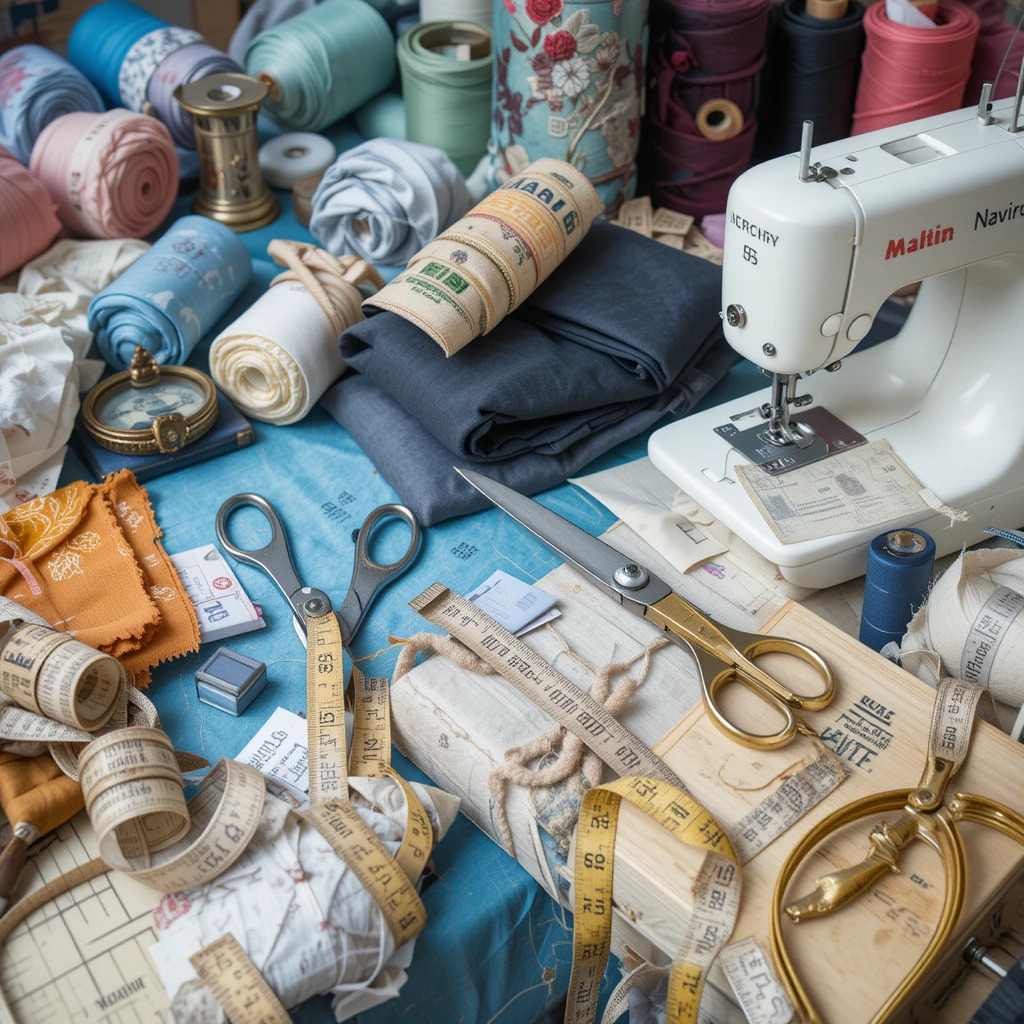Introduction
Tailoring is one of the oldest and most respected crafts in human history. From royal garments to everyday wear, the work of tailors has shaped how we dress and present ourselves. Despite the rise of mass production and fast fashion, tailoring remains an essential skill. This article explores the job description of a tailor and why this craft holds enduring significance in today’s world.
The Job Description of a Tailor

1. Creating Custom Garments
Tailors design, cut, and sew garments to fit individual customers. This involves understanding the client’s measurements, preferences, and the occasion for which the clothing is intended.
2. Alterations and Repairs
Tailors often modify existing clothing, from adjusting hems and taking in waists to replacing zippers and repairing tears. These services make clothes more functional and durable.
3. Advising Clients
A good tailor acts as a style consultant, helping clients choose fabrics, patterns, and cuts that complement their body types and personal style.
4. Precision and Attention to Detail
Tailoring demands meticulous attention to detail, ensuring perfect fits and seamless finishes. Every stitch, seam, and fold contributes to the garment’s overall quality.
5. Mastery of Tools and Techniques
Tailors use specialized tools like sewing machines, measuring tapes, scissors, and pressing irons. They also need knowledge of techniques such as pattern drafting, fabric cutting, and hand-stitching.
6. Fabric Knowledge
Tailors must understand the properties of different fabrics—how they drape, stretch, and react to washing or wear—to ensure the garment meets the client’s expectations.
Why Tailoring Is Still Important Today

1. The Decline of Fast Fashion Quality
Fast fashion’s rapid production often sacrifices quality for quantity. Tailors provide a counterbalance, offering custom-fit, durable garments that outlast cheaply made alternatives.
2. Sustainability
In an age of environmental awareness, tailoring promotes sustainability. Alterations and repairs extend the lifespan of clothing, reducing textile waste. Custom-made garments also minimize overproduction and excess inventory.
3. Celebrating Individuality
Tailoring allows for unique, personalized clothing that reflects individual style. Unlike mass-produced items, tailored garments celebrate the wearer’s uniqueness, offering a level of exclusivity and sophistication.
4. Supporting Special Occasions
For weddings, proms, and other formal events, tailored clothing is often a must. A perfectly fitted suit or dress can elevate an occasion and boost the wearer’s confidence.
5. Preserving Cultural Traditions
Tailoring plays a vital role in preserving cultural heritage. Traditional garments, such as saris, kimonos, and kilts, require expert knowledge to create and maintain. Tailors ensure these pieces remain a part of modern life.
6. Career Opportunities
Tailoring is a valuable skill in the fashion and costume industries. Tailors are in demand for theater productions, film wardrobes, and haute couture fashion houses, where precision and craftsmanship are paramount.
7. The Need for Fit and Comfort
Off-the-rack clothing often doesn’t fit everyone perfectly. Tailors bridge this gap, ensuring garments feel as good as they look, enhancing comfort and wearability.
The Challenges of Modern Tailoring
While tailoring remains important, it faces challenges in today’s market:
- Competition from Mass Production: Cheap, ready-to-wear clothing often overshadows the value of bespoke tailoring.
- Loss of Skilled Craftspeople: The art of tailoring requires years of practice, but fewer people are pursuing this craft as a career.
- Cost Concerns: Custom tailoring can be expensive, limiting access for some consumers.

Why Learning Tailoring Is a Valuable Skill
1. Self-Sufficiency
Learning to sew and tailor can save money on alterations and repairs, while also empowering individuals to create their own clothes.
2. Creative Expression
Tailoring is an art form, allowing for creativity in designing and constructing unique garments.
3. Career Potential
Skilled tailors are always in demand, particularly in high-end fashion, bespoke services, and costume design.
4. Contribution to Sustainability
As sustainability becomes a priority, tailors can play a key role in reducing waste and promoting conscious consumerism.
Conclusion
Tailoring is far more than just stitching fabric; it’s a craft rooted in precision, creativity, and tradition. In a world dominated by fast fashion, the role of the tailor is as important as ever—providing quality, sustainability, and individuality. Whether you’re looking for a perfectly fitted suit, a repaired favorite garment, or a piece that tells a story, the tailor’s skill remains invaluable. Investing in tailoring is an investment in timeless craftsmanship and sustainable fashion.


